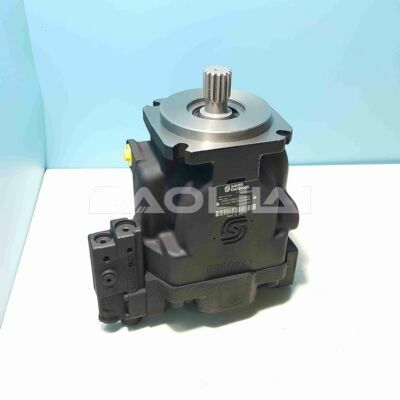How Springs Ensure Efficient Operation and Fluid Control of Piston Pumps
Springs are often used in plunger pumps to control the opening and closing of valves. Piston pumps are positive displacement pumps that use a reciprocating plunger to pressurize and deliver fluid through the system. The action of the plunger creates a pressure pulse, and the valve is used to control the direction of flow and regulate the movement of the fluid within the pump.
The role of springs in a plunger pump is critical to maintaining correct valve timing and ensuring efficient pump operation. Here is how a spring is used in a plunger pump to control the opening and closing of a valve:
1. Valve return spring: The plunger pump usually has an inlet valve and an outlet valve, which open and close according to the reciprocating motion of the plunger. After each stroke, the valve needs to close quickly and reliably to prevent backflow and ensure fluid is directed to the desired flow path.
- The valve return spring is used to provide the necessary force to close the valve immediately after the plunger stroke. These springs ensure the valve closes tightly and prevent any leakage or backflow during pump operation.
2. Valve opening spring: The inlet and outlet valves need to open at the proper time to allow fluid to enter or leave the pump chamber.
- The valve opening spring helps to overcome the resistance of the valve opening, especially when the pump is running at high pressure. These springs ensure that the valve opens at the correct moment during the pump cycle, resulting in smooth, efficient fluid flow.
FR-R-090C-LS-20-20-NN-N-3-S2C2-A1N-NNN-NNN-NNN FRR090CLS2020NNN3S2C2A1NNNNNNNNNN
FR-R-090C-LS-20-20-NN-N-3-S2T2-A1N-NNN-NNN-NNN FRR090CLS2020NNN3S2T2A1NNNNNNNNNN
FR-R-090C-LS-20-26-NN-N-3-S1N2-A1N-NNN-NNN-NNN FRR090CLS2026NNN3S1N2A1NNNNNNNNNN
FR-R-090C-LS-21-20-NN-N-3-K4N2-A1N-NNN-NNN-NNN FRR090CLS2120NNN3K4N2A1NNNNNNNNNN
FR-R-090C-LS-21-20-NN-N-3-K4N4-A1N-AAA-NNN-NNN FRR090CLS2120NNN3K4N4A1NAAANNNNNN
FR-R-090C-LS-21-20-NN-N-3-K4N4-A1N-NNN-NNN-NNN FRR090CLS2120NNN3K4N4A1NNNNNNNNNN
FR-R-090C-LS-21-20-NN-N-3-S1A2-A1N-NNN-NNN-NNN FRR090CLS2120NNN3S1A2A1NNNNNNNNNN
FR-R-090C-LS-21-20-NN-N-3-S1N2-A1N-NNN-NNN-NNN FRR090CLS2120NNN3S1N2A1NNNNNNNNNN
FR-R-090C-LS-21-20-NN-N-3-S1N4-A1N-NNN-NNN-NNN FRR090CLS2120NNN3S1N4A1NNNNNNNNNN
FR-R-090C-LS-21-20-NN-N-3-S2B2-A1N-NNN-NNN-NNN FRR090CLS2120NNN3S2B2A1NNNNNNNNNN
FR-R-090C-LS-21-20-NN-N-3-S2V2-A1N-NNN-NNN-NNN FRR090CLS2120NNN3S2V2A1NNNNNNNNNN
FR-R-090C-LS-21-21-NN-N-3-K4N2-A1N-AAA-NNN-NNN FRR090CLS2121NNN3K4N2A1NAAANNNNNN
FR-R-090C-LS-21-21-NN-N-3-S1C2-A1N-AAA-NNN-NNN FRR090CLS2121NNN3S1C2A1NAAANNNNNN
FR-R-090C-LS-21-21-NN-N-3-S1N2-A1N-AAA-NNN-NNN FRR090CLS2121NNN3S1N2A1NAAANNNNNN
FR-R-090C-LS-21-21-NN-N-3-S1N2-A3N-NNN-NNN-NNN FRR090CLS2121NNN3S1N2A3NNNNNNNNNN
FR-R-090C-LS-21-22-NN-N-3-S1N2-A1N-NNN-NNN-NNN FRR090CLS2122NNN3S1N2A1NNNNNNNNNN
FR-R-090C-LS-21-22-NN-N-3-S1V2-A1N-NNN-NNN-NNN FRR090CLS2122NNN3S1V2A1NNNNNNNNNN
FR-R-090C-LS-21-24-NN-N-3-S1N2-A3N-NNN-NNN-NNN FRR090CLS2124NNN3S1N2A3NNNNNNNNNN
FR-R-090C-LS-21-28-NN-N-3-S2N2-A1N-NNN-NNN-NNN FRR090CLS2128NNN3S2N2A1NNNNNNNNNN
FR-R-090C-LS-21-30-NN-N-3-S1A2-A1N-NNN-NNN-NNN FRR090CLS2130NNN3S1A2A1NNNNNNNNNN
3. Spring preload adjustment: The spring preload or initial tension can be adjusted to fine-tune valve timing and optimize pump performance.
-By adjusting the spring preload, engineers can control the force applied to the valve, which affects when the valve opens and closes. This adjustment optimizes the pump's flow, pressure, and overall efficiency.
4. Material selection: The selection of spring material is very important to ensure the durability and reliability of the plunger pump under harsh working conditions.
- The spring is usually made of materials such as steel or stainless steel to withstand repeated loading and unloading during pump operation without losing elasticity and strength.

5. Valve spring design: The design of the valve spring is carefully designed to ensure consistent and reliable valve operation throughout the pump's working cycle.
-Valve springs are usually designed with a specific spring rate, which determines the force required to compress or stretch the spring a given distance. The spring rate affects when and how quickly the valve opens and closes.
- Engineers consider factors such as pump flow, operating pressure, valve size and desired performance characteristics when selecting or designing the appropriate valve spring.
6. Check valve: The plunger pump is usually equipped with a check valve to control the flow direction. Check valves allow fluid flow in one direction while preventing backflow in the opposite direction.
-Springs are used in the check valves to ensure they close tightly after each stroke of the plunger, preventing any backflow and maintaining system pressure.
FR-R-090C-LS-21-30-NN-N-3-S1N2-A1N-NNN-NNN-NNN FRR090CLS2130NNN3S1N2A1NNNNNNNNNN
FR-R-090C-LS-21-30-NN-N-3-S1N4-A1N-NNN-NNN-NNN FRR090CLS2130NNN3S1N4A1NNNNNNNNNN
FR-R-090C-LS-22-18-NN-N-3-S1A2-A1N-NNN-NNN-NNN FRR090CLS2218NNN3S1A2A1NNNNNNNNNN
FR-R-090C-LS-22-18-NN-N-3-S1C2-A1N-NNN-NNN-NNN FRR090CLS2218NNN3S1C2A1NNNNNNNNNN
FR-R-090C-LS-22-20-NN-N-3-S1B2-A1N-AAA-NNN-NNN FRR090CLS2220NNN3S1B2A1NAAANNNNNN
FR-R-090C-LS-22-20-NN-N-3-S1B2-A1N-NNN-NNN-NNN FRR090CLS2220NNN3S1B2A1NNNNNNNNNN
FR-R-090C-LS-22-20-NN-N-3-S1B2-A3N-AAA-NNN-NNN FRR090CLS2220NNN3S1B2A3NAAANNNNNN
FR-R-090C-LS-22-20-NN-N-3-S1C2-A1N-NNN-NNN-NNN FRR090CLS2220NNN3S1C2A1NNNNNNNNNN
FR-R-090C-LS-22-20-NN-N-3-S1NB-A1N-NNN-NNN-NNN FRR090CLS2220NNN3S1NBA1NNNNNNNNNNNN
FR-R-090C-LS-22-24-NN-N-3-S1N2-A1N-NNN-NNN-NNN FRR090CLS2224NNN3S1N2A1NNNNNNNNNN
FR-R-090C-LS-23-14-NN-N-3-S1B2-A1N-AAA-NNN-NNN FRR090CLS2314NNN3S1B2A1NAAANNNNNN
FR-R-090C-LS-23-15-NN-N-3-S1N2-A1N-NNN-NNN-NNN FRR090CLS2315NNN3S1N2A1NNNNNNNNNN
FR-R-090C-LS-23-17-NN-E-3-S1N4-A1N-NNN-NNN-NNN FRR090CLS2317NNE3S1N4A1NNNNNNNNNN
FR-R-090C-LS-23-20-NN-F-3-K4N4-A1N-NNN-NNN-NNN FRR090CLS2320NNF3K4N4A1NNNNNNNNNNNN
FR-R-090C-LS-23-20-NN-F-3-S1N2-A1N-NNN-NNN-NNN FRR090CLS2320NNF3S1N2A1NNNNNNNNNN
FR-R-090C-LS-23-20-NN-N-3-K4C2-A1N-NNN-NNN-NNN FRR090CLS2320NNN3K4C2A1NNNNNNNNNN
FR-R-090C-LS-23-20-NN-N-3-S1C2-A1N-NNN-NNN-NNN FRR090CLS2320NNN3S1C2A1NNNNNNNNNN
FR-R-090C-LS-23-20-NN-N-3-S1N2-A1N-AAA-NNN-NNN FRR090CLS2320NNN3S1N2A1NAAANNNNNN
FR-R-090C-LS-23-20-NN-N-3-S1N2-A1N-NNN-NNN-NNN FRR090CLS2320NNN3S1N2A1NNNNNNNNNN
FR-R-090C-LS-23-20-NN-N-3-S1N4-A1N-AAA-NNN-NNN FRR090CLS2320NNN3S1N4A1NAAANNNNNN
7. Pilot valve: Some plunger pumps use a pilot valve to control the operation of the main valve. The pilot valve uses a smaller spring to regulate the flow of hydraulic oil, allowing precise control of the larger main valve.
- Correct adjustment of the pilot valve spring is critical to achieving precise valve timing and maintaining the flow and pressure required by the piston pump.
8. Efficiency and Performance: Proper selection and calibration of the spring contributes to the overall efficiency and performance of the plunger pump.
- Well-designed springs minimize energy loss and ensure the valve opens and closes at the correct moment during the pump's operating cycle. This allows for efficient fluid transfer and reduces wear on pump components.
9. Overcoming Friction and Inertia: The spring helps to overcome the friction and inertia present in the valve mechanism. These forces can affect the responsiveness of the valve and affect the performance of the pump.
- Properly tensioned springs provide the force needed to overcome these resistances, allowing the valve to operate smoothly and efficiently.
10. Spring maintenance: Regular inspection and maintenance of springs is essential to ensure their normal function and service life.
- Springs can fatigue or lose their elasticity over time. Regular maintenance includes checking for signs of wear, corrosion or damage, and replacing worn springs to maintain consistent pump performance.
11. Noise and vibration suppression: The spring can help suppress the noise and vibration generated during the operation of the pump.
- Properly designed springs can reduce the effects of valve closing and dampen vibrations, resulting in quieter and more stable operation.
In conclusion, springs play a vital role in controlling the opening and closing of plunger pump valves. Their proper selection, design and calibration can significantly affect pump performance, efficiency and reliability. Engineers carefully consider various factors during the design process to ensure springs perform optimally, resulting in smooth fluid flow, efficient pump operation and extended equipment life. Regular maintenance and monitoring of the springs is critical to maintaining pump performance and detecting any problems that may arise over time.
This article is published by the official website of Baolilai Hydraulics, please contact the author and indicate the source for reprinting:https://www.baolilai-pump.cn/news/989.html






